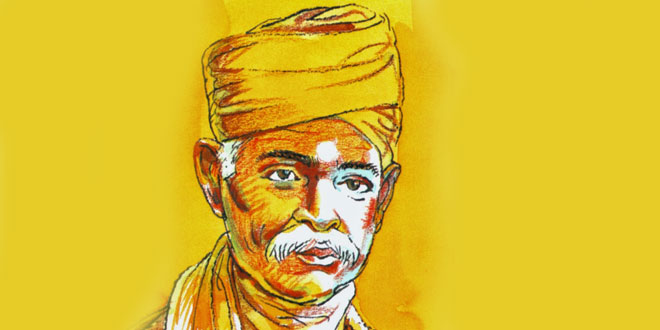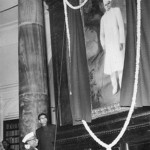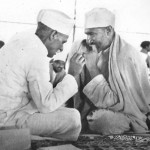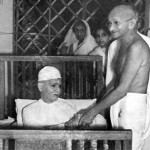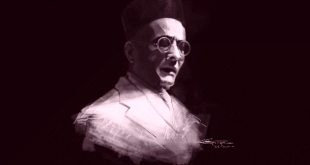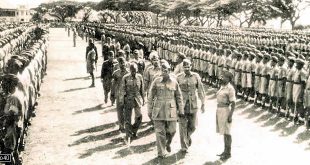Pandit Madan Mohan Malaviya, the recipient of this year’s Bharat Ratna, acted as a bridge between the extreme and the moderate views in the Congress
HOW does one introduce a person like Pandit Madan Mohan Malaviya? Perhaps as India‘s first great multi-lingual journalist and newspaper founder or as someone who strove to establish that education in India needed to be free of colonial requirements. He was also among the first to emphasize that the future of India: “… will not be Hindus or Muslims but Hindus and Muslims…”. Then, of course, perhaps as a person who sought to build bridges, first between the moderate and the extreme views in the Congress (1905-08) and later between the Hindu Mahasabha and Muslim organisations. As he often put it: “…equal justice for all communities – be they a minority or majority would be like a cement that would build a strong and united India…” (S.L. Gupta, Ph.D. thesis, B.H.U. published as Madan Mohan Malaviya: A Socio Political Study, 1978)
Malaviya’s words of wisdom
- Mahatma Gandhi always addressed Madan Mohan Malaviya as Mahamana and even as Bharat Ratan.
- Malaviya was also among the first to emphasise that the future of India: “… will not be Hindus or Muslims but Hindus and Muslims…”.
- According to him, “The (British) founders of the education system in India have seen far too much good in their own Universities (Oxford & Cambridge) that they see nothing good in anything else…”
- He said, “Students of Banaras Hindu University (BHU) or Aligarh Muslim University (AMU) will tend to produce men and women who if they are true to their religion will be true to their God and their country… I look forward to the time when students who pass out of such Universities will meet each other in closer embrace… as citizens of the same motherland.”
Parting ways with the Congress
He took great pride in being a Hindu and saw in this no contradiction with his nationalistic and patriotic fervor. It was he who first used the term Satyameva Jayate from the Upanishads and suggested its adoption as free India’s motto. He also saw no reason for minorities to be handled differently and appealed to them to take pride in India’s great ancient heritage and knowledge base. He was President of the India National Congress on four occasions —1909, 1918, 1932, 1933, making him the only one in pre-Independence India to be so. Yet he retained strong differences of ideas with the top leadership of the party. These differences gathered momentum as he noticed that political appeasement was pushing the country in a dangerous direction. He parted ways with the Congress in 1934 on the issue of the separate electorates for minorities. This did not impact the reverence people had for him. Mahatma Gandhi, for example, always addressed him as Mahamana and even as Bharat Ratan. Malaviya was born on December 25, 1861, in Allahabad. His father Brij Nath was reputed for his ability to recite ancient scriptures, particularly the Ramayana from memory. Financially the family had to struggle. Malaviya was one of six brothers and two sisters. He showed early signs of academic brilliance while playing the sitar with great proficiency, he won early recognition for being a “forceful speaker with excellent pronunciation”, (Chaturvedi, Madan Mohan Malaviya, 1972, p.8).
Newspapers his passion
The 1880s were years of political ferment in India and naturally issues for those in public life were abundant. Dadabhai Naoroji started Rasta Goftar; Lokmanya Tilak — The Maharatta and Keshari; S. N. Banarjee — the Bengalee. At the lesser-known level, Raja Ram Pal Singh of Kala Kankar had started Hindustan (1885). Raja Ram Pal Singh picked up the young Malaviya to be the editor of Hindustan in 1887. The journalist in Malaviya soon left a mark. A Government of India press report rated Hindustan as the best-produced and edited vernacular paper (1889-90). Thereafter, he worked for sometimes with the Indian Opinion and the Advocate. Around the same time he helped Sachidanand Sinha start the Hindustan Review (1893) and later the Indian People (1903). Abhyudya, the Hindi daily, Malaviyaji’s lifelong obsession was founded by him in 1907. Some of his early writings in the Abhyudya remain masterpieces of Hindi news writing. On March 5 (1907), for example, he translated a patriotic Japanese poem that was popular in those days. With Japan till then a little known ‘Oriental’ nation having just defeated the mighty Czarist Russia at war, Malaviyaji almost drew a parallel for India in the context of Britain: “My country, everywhere and always, my heart’s first love. My blood, my first thought and the sweat of my brow will be for thee alone.” (Abhyudya, Microfilm, Nehru Memorial Museum & Library (NMML), New Delhi). On April 9, he wrote another powerful piece in Abhyudya: “India was once a prosperous nation… today its eight crore people are starving… plague and disease have made it their permanent home.” (Microfilm, NMML).
Founding of the Leader
He gave up his law practice to devote more time for collecting funds for the proposed university in Kashi. As he was touring the country for donations for the university, he learnt that the Indian Herald, an English daily that took up nationalist issues, was forced to close down due to financial problems. He convinced Motilal Nehru and Shri Jayakar to donate generously. On his own part he persuaded his wife to sell off her ornaments for the cause of saving the paper. A sum of Rs 3500/- was raised from the sale. That is all he had. The paper was renamed. Malaviyaji fondly called the newspaper Leader, (1909) his fifth son. In the same year (1909), a weekly Urdu paper Swarajya was started in Prayag. Not before long its editor was arrested and charged with sedition and jailed. Malaviya supported the family and even arranged for Parshottam Das Tandon to plead the case free of cost. In 1910, Malaviyaji started yet another monthly Maryada. Just as he had earlier saved the Leader, he played a similar role for the Hindustan Times. He was Chairman of its Board from 1924-1946. Some of his writings were decades ahead of his times. He was probably the first important leader to stress the need for adopting Hindi as an official and national language. On November 18, 1909, he wrote an article for the Leader titled Indian Education:“In the first place it is impossible that a person pursues most of his studies in a foreign language. Moreover, to compel a person to give up his own language… cuts off a person from his national and cultural traditions. An attempt is made to turn him into an Englishman. It is not very well known that much before Mahatma Gandhi, Malaviya was already pleading with Hindu caste organisations to allow Harijan children access to schools, Harijans to enter temples and access for them to common wells.
Banaras Hindu University
Malaviyaji’s inspiration for founding the BHU was essentially a nationalist aspiration co-shared with Annie Besant and first discussed in 1904. He believed that universities like Bombay, Calcutta, Madras, Allahabad and Punjab (Lahore) were attracting the cream of Indian minds but only to serve the colonial purposes of the British Empire. Across the country such “rebel” nationalist minds had begun to found “nationalist educational institutions” — BHU was at the largest scale: “I believe that instructions in the truth of religion whether it be Hindu or Muslman, whether it be students of Banaras Hindu University (BHU) or Aligarh Muslim University (AMU) will tend to produce men and women who if they are true to their religion will be true to their God and their country… I look forward to the time when students who pass out of such Universities will meet each other in closer embrace… as citizens of the same motherland…”. It is important to understand that for Malaviyaji the term ‘Hindu’ in the name of the University was essentially to project a liberal non-sectarian concept that would he believed contribute towards a united and harmonious future. He was the Vice-Chancellor of BHU for over 20 years and was succeeded as Vice-Chancellor by Dr. S. Radhakrishnan in 1939. At BHU, he also started the then popular magazine Sanatan Dharam (1933)
The Hindu Mahasabha
Two incidents proved turning points in Malaviya’s political thought. The Moplah riots (1921) and the Multan riots (1922). In both cases, the Hindus were at the receiving end. In the case of the Moplahs, even forced conversions were reported. On returning from Multan where the violence and destruction had shocked him, he was persuaded by Dr Rajendra Prasad to preside over a special session of the Hindu Mahasabha that was organised in Gaya to coincide with the Annual Session of the Congress (1922) (Dr Rajendra Prasad, Autobiography, 1959, p.180). From about this time he began to share a view: “… unity could only be possible if both (Hindus & Muslims) felt that the other was strong enough to ward off successfully an unjust attack.” (New India, January 1, 1923) He wrote a new constitution for the Hindu Mahasabha and directed it to organise itself (Aaj, October 11, 1923) He was keen to keep the Mahasabha away from political involvement because he did not wish to see it come in open conflict with the Congress. Importantly, the first resolution adopted by the Hindu Mahasabha under his Presidentship in 1924 was: “… to work … in friendliness and harmony with other communities in all matters of national interest…” (New India, December 29, 1924).
Appeasement & division
What really stands out in the last years of his active public life is the clarity with which he opposed political appeasement of minorities, warning all along that it could lead to a division of the country. Yet he was always seeking reconciliation of Hindus and Muslims in an age when preaching division was common. Once when he learnt that the Ajmer unit of the Hindu Mahasabha had passed a resolution seeking a “Hindu Nation”, free of Muslims and Christians, he issued an unusually harsh public rebuke of such an idea (Aaj, November 15, 1941) Both Malaviya and V.D. Savarkar, who came to play an increasing role in the affairs of the Hindu Mahasabha as Malaviyaji gradually withdrew because of declining health, had great respect and regard for each other. Malaviyaji would not tire of drawing attention to the sacrifices Savarkar had made for the cause of India’s freedom. And this even as they had differing perceptions of India’s future path to nationhood. Malaviya was fond of saying: “Days of Hindu Raj and Muslim Raj are long past. We shall have Hindustani Raj in Hindustan…” (Aaj, October 10, 1941).
 Kids Portal For Parents India Kids Network
Kids Portal For Parents India Kids Network
